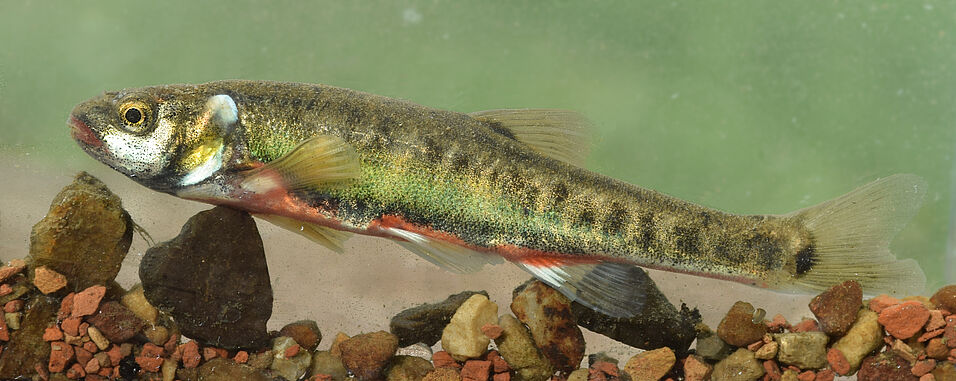Supervisors: Luise Kruckenhauser und Anja Palandačić
PhD Defensio
Monday, June 3rd 2024, 13:15 CET
Hörsaal, Fakultätszentrum für Biodiversität
Rennweg 14, 1030 Vienna
Abstract
Karst landscapes, covering approximately 14% of the Earth's land surface, harbor complex ecosystems shaped by geological processes such as the dissolution of soluble rocks. These landscapes feature complex underground water systems connected to surface water, underscoring the importance of understanding underground pathways within karst aquifers for both karst hydrology and biodiversity studies. The Dinaric Karst boasts rich biodiversity, notably characterized by its endemic freshwater fish fauna.
Chapter 1 presents a comprehensive analysis of distribution patterns and biology based on the mitochondrial genetic lineages of four genera of Dinaric Karst minnows: Delminichthys, Phoxinellus, Phoxinus, and Telestes. In this chapter, the influence of vicariance and dispersal in shaping species ranges was assessed. While Delminichthys, Phoxinellus, and Dinaric Telestes share a similar lifestyle adapted to sinking streams in karst poljes and thus have a restricted distribution, Phoxinus is widespread with an unconventional distribution pattern, unaffected by current hydrological barriers. Phoxinus distribution ranges often cross drainage and basin boundaries, and suggest the ability for underground dispersal. Conversely, the other three genera are restricted by their specialization of dwelling in sinking streams within karst poljes and cannot disperse along main river courses.
Chapters 2 and 3 shift focus to the widespread, surface-dwelling species Phoxinus lumaireul, on the influence of karst hydrology on its population genetic structure, as well as its dispersal ability through the karst landscape using underground connections. Chapter 2, based on mitochondrial DNA and one nuclear gene, identified significant genetic diversity and highlighted the influence of ongoing gene flow through underground connections and remnants of past hydrological networks on population structure. Building upon the results of Chapter 2, Chapter 3 further explored the impact of karstification on the genetic diversity and adaptation of P. lumaireul by comparing genetic structure between populations connected through underground water links with those connected through surface water network. Genome-wide data derived from ddRAD (double digest restriction-site associated DNA) sequencing revealed complex population structures influenced by historical climatic fluctuations rather than karst hydrology. Despite widespread distribution, localized adaptations and limited gene flow between river systems render P. lumaireul populations vulnerable to extinction events, particularly due to anthropogenic disturbances and habitat degradation.
In conclusion, this thesis advances our understanding of the intricate dynamics of the Dinaric Karst ecosystem by integrating genetic approaches with hydrological and geological knowledge. The findings underscore the importance of holistic management strategies for the conservation of the unique biodiversity in karst regions.


